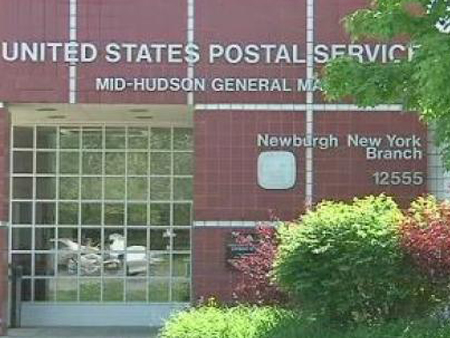Kevin Timmons loves his job.
On a chilly and drizzly day recently, he walked briskly from one shop to the next in a Baltimore County strip mall.
“Mailman!” he called as he stepped inside one store and held up a bundle of mail.
Timmons flashed a smile and asked everyone how they were doing. Moments later, he was out the door and onto the next shop.
“Each delivery to me is important,” Timmons said as he walked his route in Windsor Mill. “Each piece of mail, somebody is paying a third party to handle it and that third party is the postal service.”
Americans appreciate the dedication of postal workers such as Timmons. Seventy-two percent of respondents to a recent Gallup survey rated the U.S. Postal Service as excellent or good. That put the Postal Service first among 13 major federal agencies, including the FBI and the CIA.
The beleaguered Veterans Administration finished last, behind the perennially disliked Internal Revenue Service and the Federal Reserve.
The positive reviews came as no surprise to agency officials or workers. The Postal Service regularly comes out on top of surveys of trusted federal agencies.
But favorable survey results also come at time when the agency is struggling to remain financially viable, and as postal workers and their advocates fight proposed cuts in service and mail processing centers.
“There’s a lot of uncertainty,” said John F. Hegarty, president of the National Postal Mail Handlers Union, which represents more than 43,000 postal employees who work largely behind the scenes moving and sorting mail.
Despite an increase in revenue, the Postal Service finished fiscal 2014 with a $5.5 billion loss, according to its latest annual report to the Postal Service Board of Governors. It was the agency’s eighth straight year of financial losses.
Postal Service officials blamed the loss primarily on the requirement imposed by Congress that the agency prepay billions of dollars into a health care fund for retired postal workers.
If you take away that funding requirement, boosters note, the agency operated in the black.
Fredric Rolando, president of the National Association of Letter Carriers, called the prepayment requirement a “fiasco.”
In order to balance the books, the Postal Service has considered several changes, including closing mail-processing centers and possibly eliminating Saturday deliveries.
If those changes are made, Hegarty warned, it could undo the years of goodwill built up between postal workers and customers. Shutting down processing centers could mean it takes longer to deliver the mail, he said.
“We’re concerned that might tarnish the reputation we work so hard to build,” he said.
Instead of cutting services, Hegarty and other union leaders recommend adding services to lure customers into post offices. The Postal Service could add expand its money-order service with check-cashing and other quasi-banking services. Or post offices could partner with state and local governments to issue hunting and fishing licenses or identification cards, he said.
“Grow the business,” he said. “Don’t cut and shrink the business.”
Rolando said the Postal Service should try to keep building on its successes in areas such as package delivery, instead of cutting services.
“Given the postal networks’ return to profitability, it makes no sense to reduce services to small businesses and residents,” he said.
The Gallup pollsters found that younger Americans — who are more likely to than older Americans order goods online — gave the highest marks to the agency.
The Postal Service earned a rating of good or excellent from 81 percent of respondents ages 18 to 29, compared to 75 percent from those aged 30 to 49 and 65 percent from those aged 50 and older.
Gallup suggested that older Americans are more likely to receive and pay bills via mail and are more likely to visit post offices in person — experiences that are less enjoyable than receiving a package in the mail.
Gallup suggested that the Postal Service could use the support of younger customers to its advantage.
“The agency has the opportunity to establish itself as a trusted brand with this new generation, putting the baggage of any tarnished image with older Americans behind them,” the pollster wrote.
Freda Sauter, a Postal Service spokeswoman for the Baltimore area, said in a statement that the agency is working hard to fulfill the congressional requirements and meet customer needs while remaining self-supporting. The Postal Service is an independent agency that gets no money from taxpayers.
On his route in Windsor Mill, 52-year-old Timmons hustled to keep his customers happy. After 90 minutes of sorting the mail, his route takes more than six hours to complete and includes a mix of delivering to homes and businesses both on foot and from his mail truck.
While he was delivering to a tire shop, he ran into an old buddy from his high school days at Cardinal Gibbons. A little later, at a cellphone store, he handed out change-of-address forms and gave instructions to the store clerk who is moving.
Timmons, who also trains new postal carriers and serves in the Army Reserve, said he hopes to keep the Windsor Mill route until he is eligible to retire in three years.
“I like the job. I like the people,” he said. “I like to interact with people and provide a great service to them.”

